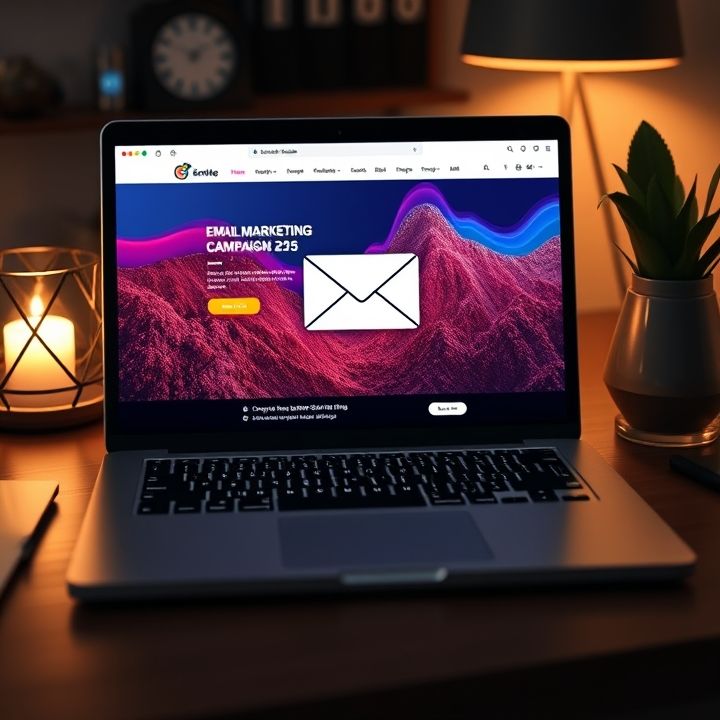Table of Contents
- Introduction
- Understanding Your Audience: The Foundation of Effective Subject Lines
- The Power of Personalization: Making Your Audience Feel Special
- Leveraging Curiosity and FOMO: How to Entice Opens
- Using Numbers and Lists: The Appeal of Structure and Clarity
- Testing and Analyzing: How A/B Testing Can Optimize Your Subject Lines
- The Impact of Timing: When to Send Your Emails for Maximum Engagement
- Avoiding Spam Triggers: Ensuring Deliverability and Open Rates
- Crafting Mobile-Friendly Subject Lines: Reaching Your Audience on the Go
- Conclusion
- Frequently Asked Questions
Introduction
Ever wondered why some emails stand out in a crowded inbox and others get lost in the shuffle? The secret often lies in the subject line. Unlock the Secrets: How to Craft Irresistible Subject Lines That Skyrocket Your Email Open Rates! is here to guide you through the art and science of writing subject lines that not only catch attention but compel recipients to click open.
In this article, we’ll explore the fascinating world of email subject lines, covering proven strategies and tips to elevate your email marketing game. Imagine your emails consistently appearing at the top of your subscribers’ inboxes, begging to be opened. Whether you’re a seasoned marketer or just starting, you’ll find actionable insights to transform your email campaigns.
| Strategy | Benefit |
|---|---|
| Personalization | Increases open rates by making the email feel tailored to the recipient. |
| Urgency | Creates a sense of urgency that prompts immediate action. |
Get ready to unlock the secrets behind crafting subject lines that practically beg to be clicked!
Understanding Your Audience: The Foundation of Effective Subject Lines
Understanding your audience is essential for crafting compelling subject lines that consistently achieve high open rates. Knowing who your audience is, what they care about, and what language resonates with them is the first step towards creating subject lines that capture their attention. Start by analyzing demographic data such as age, gender, location, and interests. This information helps tailor your message to address specific needs and preferences.
Segmenting your audience based on their behavior and past interactions with your emails also provides valuable insights. For instance, frequent buyers might respond well to exclusive offers, while new subscribers might be more interested in introductory content. Personalization is key; incorporating the recipient’s name or referencing past purchases can make the subject line more engaging and relevant.
Additionally, understanding the problems or challenges your audience faces allows you to create subject lines that offer solutions, evoke curiosity, or provide value. By aligning your subject lines with your audience’s expectations and preferences, you increase the likelihood of your emails being opened and read.
The Power of Personalization: Making Your Audience Feel Special
The power of personalization in crafting compelling subject lines cannot be understated. When you make your audience feel special, they are more likely to engage with your content. Adding a personal touch, such as using the recipient’s name, can immediately capture their attention. For example, a subject line like ‘John, don’t miss out on today’s special offer!’ feels more inviting and direct than a generic one.
Segmenting your audience and tailoring subject lines to specific interests or behaviors can further enhance the sense of personalization. For instance, sending a different subject line to frequent buyers compared to new subscribers can increase relevance and appeal. Highlighting something unique to them, such as a past purchase or a special event, makes the recipient feel valued. This targeted approach not only helps in increasing open rates but also builds a sense of loyalty and trust.
Emotional triggers play a significant role as well. Words that evoke curiosity, urgency, or exclusivity can make the recipient more eager to open the email. Combining these emotional triggers with personalized elements can result in subject lines that stand out in a crowded inbox.
Leveraging Curiosity and FOMO: How to Entice Opens
One effective strategy to craft compelling subject lines that yield high open rates is to leverage curiosity and the Fear of Missing Out (FOMO). Curiosity-driven subject lines tease the reader with just enough information to pique their interest without giving away the content’s full details. For example, instead of saying, ‘New Features in Our App Update,’ you could write, ‘Discover the Game-Changing Feature Everyone’s Talking About.’ This approach taps into the reader’s natural curiosity, urging them to open the email to learn more.
FOMO-based subject lines play on the reader’s fear of missing out on something valuable, exclusive, or time-sensitive. Using words like ‘limited time,’ ‘exclusive offer,’ or ‘only for today’ can create a sense of urgency. An example would be, ‘Don’t Miss Out on Our Exclusive Weekend Sale!’ By invoking a sense of urgency and exclusivity, FOMO tempts readers to act quickly, driving higher open rates.
Combining these elements effectively can significantly boost the engagement and success rates of your email campaigns. It’s essential to understand your audience and craft subject lines that resonate with their interests and needs, aiming to spark both curiosity and urgency.
Using Numbers and Lists: The Appeal of Structure and Clarity
Using numbers and lists in your subject lines can significantly enhance their appeal and clarity, driving higher open rates. Numbers are inherently attention-grabbing because they create a sense of structure and promise specific insights. For example, a subject line like ‘5 Tips to Improve Your Writing Skills’ is likely to capture more interest than a vague one such as ‘Improve Your Writing Skills.’ The clarity provided by numbers assures readers that the content will be concise and easy to follow.
Lists provide a sense of order, making the information appear easily digestible, especially in our fast-paced digital world. People are often drawn to numbered subject lines because they indicate a quick, informative read with actionable takeaways. Moreover, numbers set expectations; when readers see a list, they know they won’t have to sift through endless paragraphs to find what they need.
Utilizing numbers and lists also aids in creating a perception of the content being well-researched and authoritative. Consequently, subject lines that incorporate numbers and lists not only pique curiosity but also instill confidence in the reader, making them more likely to click through and engage with your content.
Testing and Analyzing: How A/B Testing Can Optimize Your Subject Lines
Testing and analyzing your subject lines is crucial for optimizing open rates. A/B testing, also known as split testing, is one of the most effective methods to determine what resonates best with your audience. This process involves creating two or more variations of a subject line and sending them to different segments of your email list. By comparing the open rates and other key metrics, you can identify which subject line performs better.
Start by changing one element at a time, such as the length, tone, or use of personalization. For example, you might test a subject line with the recipient’s name versus one without it. Once you have gathered enough data, analyze the results to see which version had a higher open rate. This information will help you understand your audience’s preferences and tailor future subject lines accordingly.
Remember, consistency is key. Continuously testing and analyzing subject lines will not only improve your open rates but also provide valuable insights into what works best for different segments of your audience. Over time, this iterative process will help you craft compelling subject lines that consistently captivate your readers and enhance your email marketing efforts.
The Impact of Timing: When to Send Your Emails for Maximum Engagement
The timing of an email can significantly impact its open rate and overall engagement. Sending your emails at the right time ensures that your audience is more likely to see and engage with your content. Research suggests that there are optimal times and days of the week for sending emails to maximize open rates. For instance, emails sent on Tuesdays, Wednesdays, and Thursdays tend to perform better compared to those sent on Mondays or Fridays. This is because recipients are less likely to be overwhelmed with emails and can dedicate more attention to your message.
The specific time of day also plays a crucial role. Generally, emails sent in the mid-morning between 9 AM and 11 AM or in the early afternoon between 1 PM and 3 PM are more likely to be opened. During these times, people are usually checking their emails as they settle into their workday or return from a lunch break.
However, it’s important to note that the optimal sending time can vary depending on your target audience’s habits and time zones. Conducting A/B tests with different sending times can help you determine the best schedule for your specific audience, ensuring maximum engagement with your emails.
Avoiding Spam Triggers: Ensuring Deliverability and Open Rates
Crafting compelling subject lines is an art that significantly impacts email open rates. One key aspect is avoiding spam triggers to ensure emails land in the inbox and not the spam folder. Firstly, steer clear of using all caps and excessive punctuation marks like exclamation points, as these are recognized by spam filters. Additionally, avoid common spam phrases such as ‘free,’ ‘act now,’ or ‘limited time offer’ within the subject line. Personalization plays a crucial role as well; including the recipient’s name or relevant details can make the email appear more genuine and less like spam.
It is essential to test different subject lines by employing A/B testing. This can provide insights into what works best for your audience, helping you refine your approach. Also, monitoring your sender reputation and maintaining a clean email list ensures a higher deliverability rate. Engaging with inactive subscribers and periodically updating your list can prevent it from becoming stale. By focusing on these strategies, you can significantly improve the chances of your emails being opened and read, thereby contributing to higher engagement rates.
Crafting Mobile-Friendly Subject Lines: Reaching Your Audience on the Go
In today’s fast-paced world, many people access their emails via mobile devices, making it crucial to craft mobile-friendly subject lines. The first step is to keep your subject lines short and to the point, ideally between 30-50 characters. This ensures that your message is not cut off on a smaller screen. Using emojis sparingly can also make your subject line stand out, but use them only when appropriate to your audience and brand.
Secondly, personalization goes a long way. Including the recipient’s name or other personalized details can make your email feel more relevant and urgent. Additionally, leveraging urgency and exclusivity — phrases like “Limited Offer” or “Last Chance” — can encourage immediate engagement.
It’s also essential to A/B test your subject lines. Trying out different variations and tracking their performance can give you insights into what works best for your audience. Finally, avoid using all caps or too many special characters as these can make your email look like spam and may negatively impact deliverability.
By following these strategies, you can improve the chances of your emails being opened and read, even on the go.
Conclusion
In conclusion, crafting irresistible subject lines that skyrocket your email open rates involves a blend of strategies, from understanding your audience to leveraging curiosity and FOMO. Personalization can make your recipients feel valued, significantly boosting engagement. Numbers and lists provide clarity and structure, making your emails more appealing. A/B testing and careful timing ensure your efforts hit the mark, while avoiding spam triggers and crafting mobile-friendly subject lines maximize deliverability and reach. By consistently applying these techniques, you can create subject lines that not only capture attention but also drive meaningful interaction with your content.

